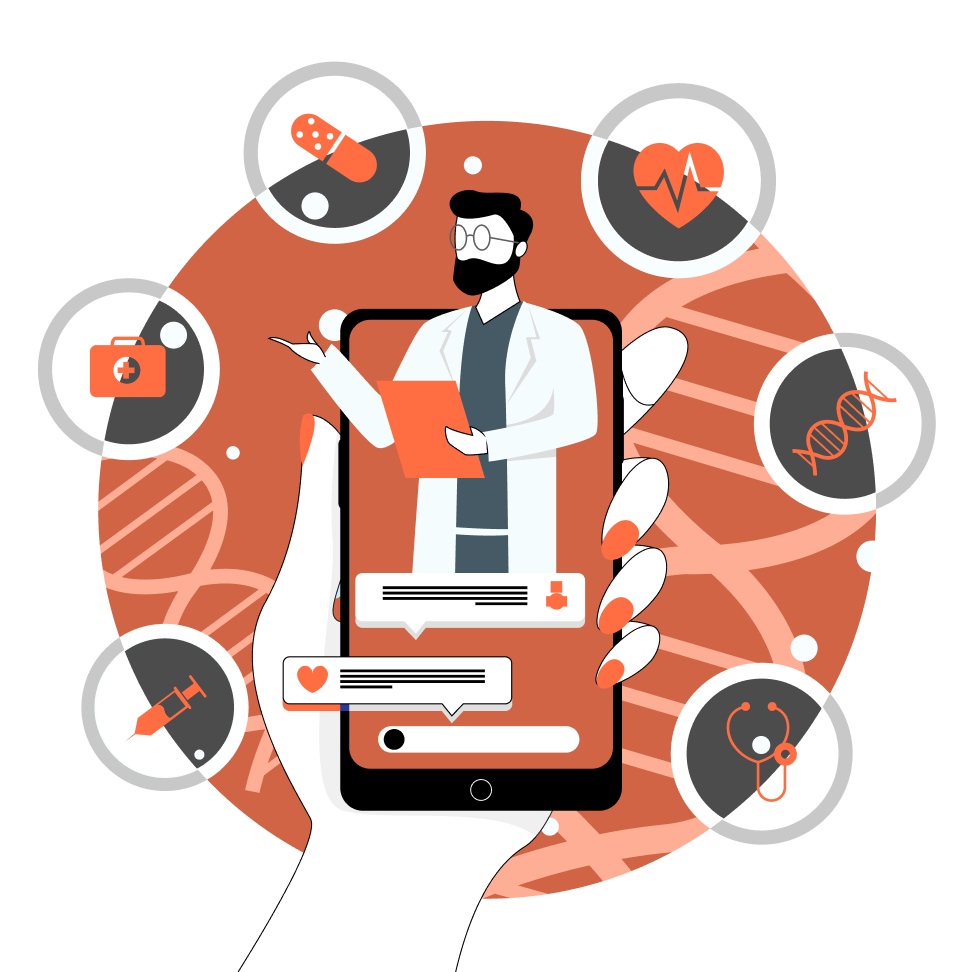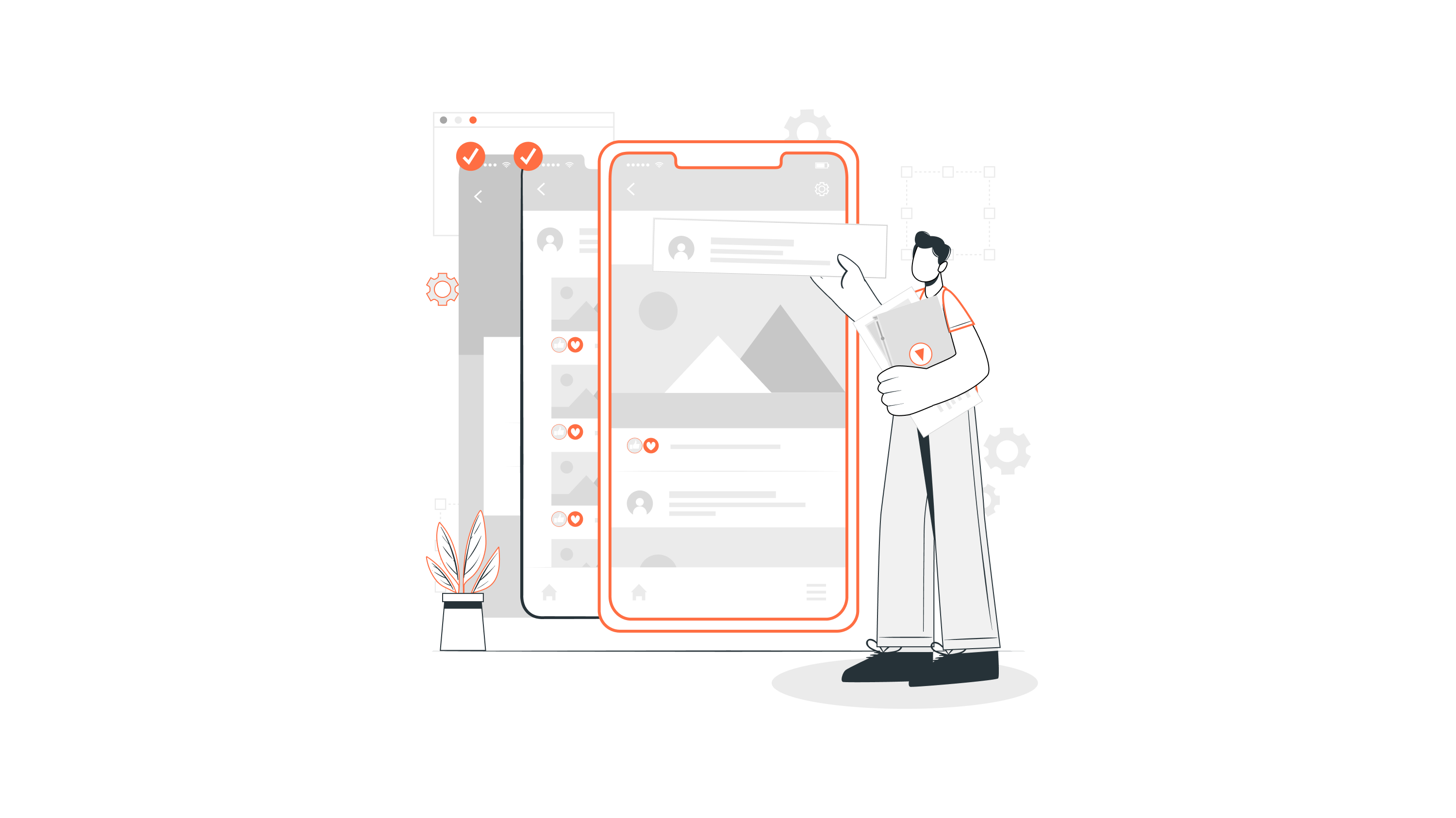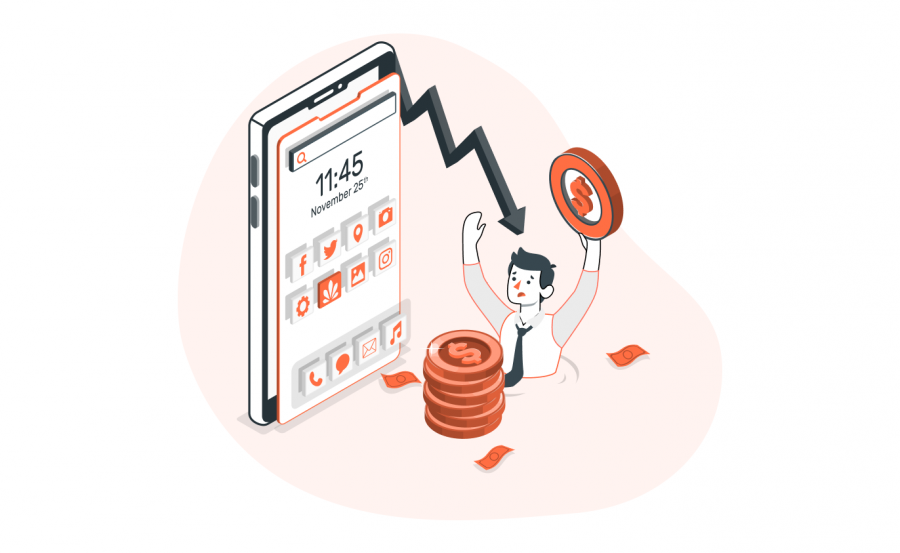The medical sector is undergoing a significant transition owing to digitalization.
The efficient yet economical custom healthcare software provides consumers and patients with a top-notch experience.
Medical software suites have been growing ever since the pandemic kicked in. The global healthcare software as a service market size is expected to reach around 79.56 billion dollars by 2030.
Healthcare workers are largely benefited from its time management and uninterrupted workflow service.
This complete guide provides you with information about medical applications, devices, and the ways in which the medical industry is advancing digitally.
Healthcare software development
Healthcare or medical software works in two ways:
- As a patient’s medical information system facilitates easy management of the doctor’s schedule, reports, and staff.
- As a platform using which patients may make appointments communicate with their doctors, share reports and get health advice.
Top 10 healthcare software types
You need to be aware of the fact that there are over 95,000 healthcare apps and that they are blooming in number in the app stores before stepping in to build medical software. Let’s take a look at top healthcare software types.
1. Electronic health record (EHR) software
This popular and widely used medical software is similar to the CRM designed for the medical industry.
EHR keeps a full record of the patient’s information, including their diagnoses, the tests they had, their treatment history and the drugs they have had and are now receiving.
The primary goal of EHRs is to lessen the workload of hospitals and medical institutions by reducing the need for manual handling and managing patient data.
2. Practice management software (PMS)
The PMS, commonly referred to as clinic management software, enables continuous clinic workflow.
The major benefits include error-free documentation, appointment management, and efficiency.
Electronic health records, billing, and appointment scheduling are standard features.
If the clinic is linked to a lab or pharmacy, features can be integrated into the software to meet the demands.
Dentistry, ophthalmology, and other areas of medicine might implement specialized systems with prescription management and health records made to fit their particular requirements.
In addition to tokens and appointments, the system may also monitor clinic queues.
3. Hospital management system (HMS)
The medical software manages inpatient and outpatient appointments and their respective data. It also aids in organizing the doctor’s schedules, operations and other procedures.
HMS also manages both labs and pharmacies. It keeps patients updated about the availability of rooms and conditions if they are occupied or under construction.
Smartphones are also used to access medical apps, which simplifies work.
Through the hospital website, patients may access medical systems to schedule appointments and keep track of their medical histories, treatment plans, and drug regimens.
Suppose there are any follow-up visits or immunizations.
In that case, SMS will provide notice.
4. Lab information management systems (LIMS )
The LIMS manages a laboratory’s activities, including sample collection, inventory management, financial capabilities, and the ability to interface with lab equipment.
Fully automated and error-free findings are the remarkable elements of this software. It also alerts if there are any abnormal results.
Reports can be generated from the samples and recorded if the LIMS system is coupled with the hospital’s management system.
Independent laboratories can also put into practice stand-alone systems.
Each step of the sample journey is recorded to avoid possible mistakes. The findings are recorded eventually during the process, which reduces the difficulty in documenting.
5. Billing software
Before EHRs were introduced, several hospitals started adopting accounting software. This billing software tracks medical invoices and insurance claims.
Through this billing software, you can access the patient’s expenditure report.
6. Telehealth
Online doctor consultation services are made possible by telehealth software. It lets patients text and makes video calls to connect with doctors.
The telemedical sector is predicted to expand to a value of 186.7 billion dollars by 2027.
This software simplifies complex labor, which benefits patients and healthcare professionals. Patients get immediate access to medical treatments.
7. E-prescription software
This electronic prescribing tool aids physicians and other healthcare professionals in writing prescriptions that may be sent immediately to the labs and pharmacy.
These healthcare-related applications provide users a great experience while also ensuring accuracy and safety.
8. Cancer detection software
The medical sector is evolving with the introduction of new technologies, which is another benefit for the healthcare sector.
SpiroNose is a method for detecting cancer that aids in the diagnosis of cancer as well as other chronic illnesses. The procedure involves the patient blowing into the device’s pipe.
The data collected is sent to an online system, where the complications are diagnosed with the help of sensitive detectors, each configured to detect a specific GRCP particle.
Machine learning technologies convey the forecast to the server network. The profiles of every patient are stored in a cloud-based library.
9. Medical imaging software
Making three-dimensional pictures from two-dimensional medical imaging data is standard practice using medical imaging and visualization software.
The following can be done using medical 3D imaging software:
- Modeling the human body in 3D: Medical experts may now create personalized photos of individual patients using cutting-edge software tools.
For instance, a precise, realistic model of the patient’s teeth may be created using 3D modeling technology before orthodontic surgery.
- The design and printing of equipment or bodily parts: Prosthetic limbs and coronary stents for cardiac surgery are medical items that can be printed with this technique.
Medical software development trends in 2022
New technologies are introduced in the medical industry daily. It’s crucial to adapt to new developments and keep up with processes.
In this area, learn more about how healthcare is going digital. These factors will influence healthcare providers in 2022.
- Blockchain
- Machines that can learn from data
- Telemedicine
- AR/VR
- Massive amounts of data
- Cloud computing
- The Internet of Things (medical devices)
- Gamification
- Apps for education
You can read more about the healthcare trends here.
Step-by-step custom healthcare software development
1. Define your target audience
You need to know your target audience and their demands when developing custom medical software.
The client and the seller will benefit from a clear picture of the future solution if the demands and preferences of the target audience are thoroughly examined.
It will be easy to choose when it comes to features and technologies (virtual reality, cloud computing, Internet of Things) that should be incorporated.
Developers can deliver a better product with a deep relationship with prospective customers.
2. Gathering essential information about your product idea
Establishing your product’s specifications is critical after determining its market need.
Another critical step is to choose whether your program will be distributed via a mobile device (iOS, Android) or the web.
You need to know if your answer is technologically possible before pursuing it. Check if it is also financially feasible once you have established that.
3. Design user-friendly UI/UX
The design phase is one of the most critical stages in creating any software product because a poorly designed product can discourage customers.
Good software must have a friendly and simple user interface.
As a result of this collaboration, software engineers and designers construct a uniform and easy-to-use user interface (UI) and a user experience (UX).
Details include color scheme, font, button size, text alignment, icon, and photo positioning.
4. Choosing the right app development partner
Hiring healthcare software and development experts can ensure that your app has the most up-to-date features, functionality, and technology.
You can count on your app development partner to thoroughly analyze several stack technologies to determine which is ideal for your needs.
5. Prototyping and MVP development
A prototype is a working model of your finished product that you can interact with.
Here are why prototyping is essential:
- Before developing the product, this is an excellent approach to testing it.
- It’s possible to get feedback and ensure you’re on the correct path before spending a lot of development resources.
- Rather than waiting until the end of the project to remedy problems, you may avoid them by adjusting your project as you go along.
Developing an MVP is a great way to determine whether your concept has potential and should be pushed further or whether some revision of the underlying assumptions is needed.
Suggested read:12 Successful Minimum Viable Product Examples to Consider Before Developing Your Product
6. Start testing
A crucial aspect to consider is testing a software product before release.
In this stage, the user experience is collected, development challenges are identified, feedback is gathered, and necessary improvements are almost instantly made.
Your app’s compatibility with your target audience can also be tested. Users’ expectations should be considered when deciding between functional and unit testing.
As a custom app development company with years of experience, we can tell you that many of the features that our clients were so thrilled about didn’t sit well with the end users.
Testing your healthcare app may help you find and repair errors and make sure it improves with each new release.
7. The release of the product and maintenance
Once your app is complete, you may invite people. On the other hand, post-development is still a phase that must be taken seriously.
Fixing bugs, keeping the app up to date with the most recent regulations, and generally trying to make it safer and quicker are the main priorities if you want your application to be a long-term success.
Considerations for custom healthcare software development
More and more healthcare SaaS businesses and products have emerged over the previous two years, with most firms choosing to outsource their medical software development work.
The five qualities listed below are ones you should look for in a software outsourcing company:
1. Technological expertise
There are a few things to remember when selecting a tech stack for a healthcare app.
It is essential for companies who build medical software to be familiar with embedded software development.
2. Industry knowledge
The development business must deeply understand the healthcare industry to create a successful app. Find out whether they’ve worked on comparable projects in the past.
3. Experienced developers
A healthcare app comprises several layers, each with its own set of technologies and complex structure.
As a result, your healthcare software development company has to have a group of talented developers that can work on your project.
4. Scalability and capacity
Go for a big or mid-sized development business since they will likely have the resources, tools, and procedures necessary to handle large-scale projects.
They should provide sufficient resources and a sizable team per your requirements.
5. Security measures
The development of healthcare software entails handling vast volumes of personal data.
As a result, ensure that your potential outsourcing partner designs a healthcare app that adheres to international security laws such as HIPAA, PCI, and ISO.
You can read about the common risks while outsourcing your development.
Conclusion
Modern medical facilities are relying more on digital technologies. Cutting expenses and acquiring new clients are practical advantages for those who develop faster than their competitors.
As a result, custom healthcare app development is necessary to protect your clientele from switching to a more modern technological competition.




